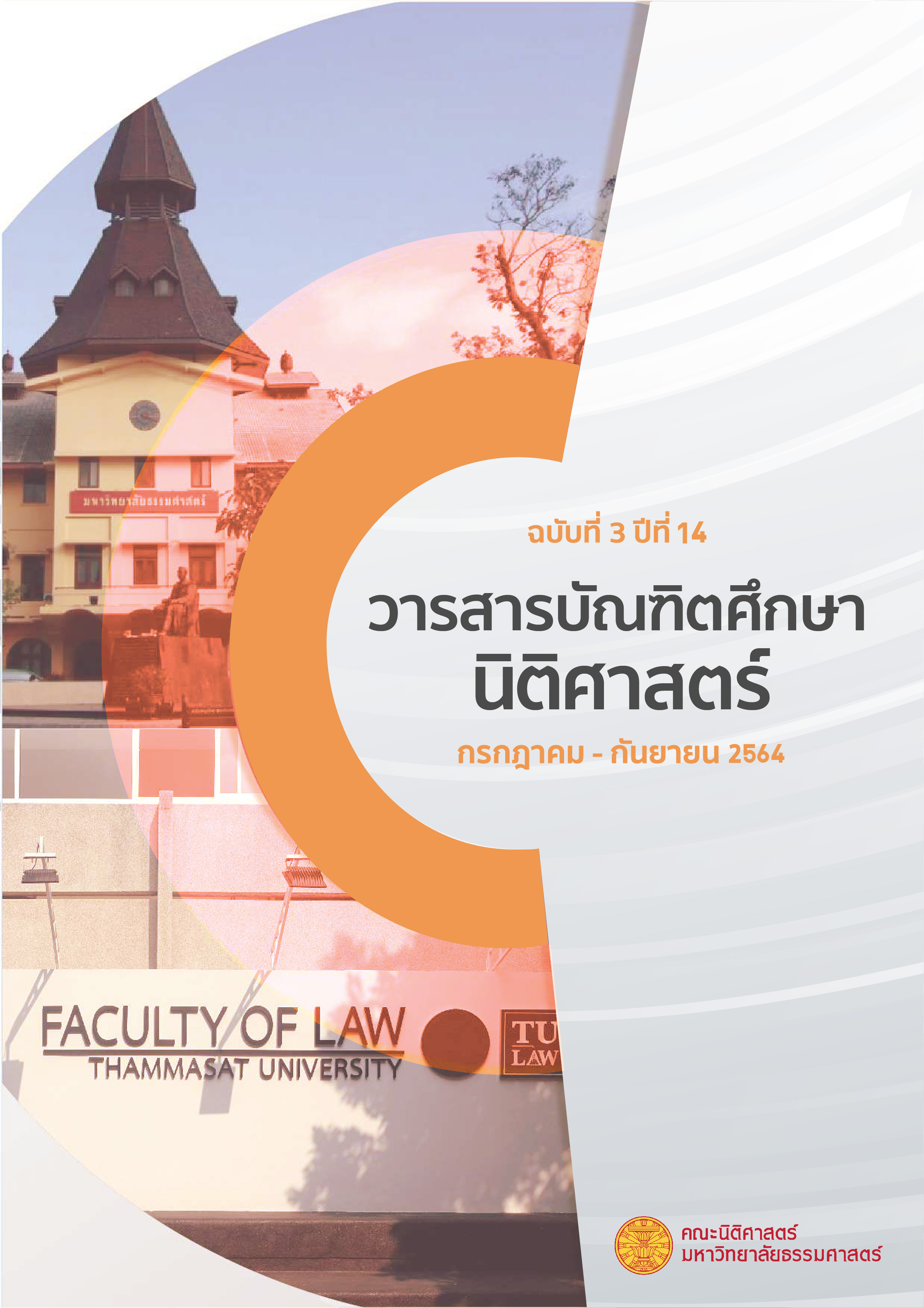ปัญหาการบันทึกคำพยานของศาล บทความวิทยานิพนธ์
Main Article Content
บทคัดย่อ
ปัจจุบัน ศาลไทยใช้รูปแบบการบันทึกคำพยานด้วยวิธีการให้ผู้พิพากษาที่นั่งพิจารณาคดีฟังจับใจความคำเบิกความของพยานบุคคลที่ได้มาให้การต่อศาล จากนั้นเรียบเรียงถ้อยคำใหม่ จัดลำดับเหตุการณ์ ตัดคำฟุ่มเฟือยและไม่จำเป็นออกเพื่อให้เกิดความกระชับ แล้วบันทึกคำเบิกความพยานด้วยถ้อยคำสำนวนของผู้พิพากษาเอง หรือที่เรียกว่า “การอมความ” เนื่องจากเดิมศาลไทยมีแนวคิดว่า พยานบุคคลที่มาเบิกความต่อศาล อาจตอบคำถามของทนายความไม่ตรงประเด็น หากใช้วิธีการบันทึกคำพยานแบบทุกถ้อยคำ (Verbatim record) ตามที่พยานได้ให้การไว้แล้ว อาจทำให้ไม่ได้เนื้อความชัดเจนและการพิจารณาคดีเกิดความล่าช้า แต่การบันทึกคำพยานด้วยวิธีการอมความกลับเป็นปัญหาที่ส่งผลกระทบต่อการดำเนินกระบวนพิจารณาและไม่สอดคล้องกับหลักการพิจารณาคดีหลายประการ ได้แก่ การที่พยานต้องหยุดเบิกความเป็นระยะเพื่อให้ผู้พิพากษาอมความ ส่งผลให้การพิจารณาคดีดำเนินไปอย่างไม่ต่อเนื่อง การสืบพยานบุคคลแต่ละปากจึงต้องใช้เวลานาน ขัดกับหลักความรวดเร็วในการพิจารณาคดี ซึ่งกระบวนพิจารณาที่ไม่ลื่นไหลย่อมทำให้ผู้พิพากษาขาดสมาธิและไม่มีโอกาสสังเกตอากัปกิริยาของพยานเพื่อประกอบการรับฟังคำเบิกความของพยาน ปัญหาประการสำคัญคือ บันทึกคำเบิกความพยานที่ได้จากการอมความของผู้พิพากษามักจะมีความเป็นอัตวิสัย (Subjective) สูง ส่วนหนึ่งเกิดจากความสามารถในการเรียบเรียงถ้อยคำและการใช้ดุลพินิจในการบันทึกคำพยานของผู้พิพากษาแต่ละนายแตกต่างกัน จนมีการตั้งข้อสังเกตว่า วิธีการดังกล่าวอาจทำให้คำพยานถูกบิดเบือนเพราะไม่ได้เป็นการบันทึกในสิ่งที่พยานได้เบิกความจริง และการอมความก็ไม่ต่างจากการที่ผู้พิพากษาเป็นผู้เบิกความเอง
บทความนี้ จึงมุ่งศึกษาถึงรูปแบบ วิธีการ และปัญหาที่เกิดขึ้นในทางปฏิบัติอันเนื่องมาจากการบันทึกคำพยานด้วยการอมความ ตลอดจนได้ศึกษาระบบบันทึกคำเบิกความพยานของศาลต่างประเทศ ได้แก่ ประเทศฝรั่งเศส ประเทศญี่ปุ่น ประเทศสหรัฐอเมริกา และประเทศนิวซีแลนด์ เพื่อประโยชน์ในการเสนอแนะแนวทางที่สามารถนำมาปรับใช้กับบริบทการพิจารณาคดีของศาลไทยได้อย่างเหมาะสม ทั้งนี้ ได้นำเสนอร่างข้อบังคับของประธานศาลฎีกาว่าด้วยการบันทึกคำพยานด้วยระบบดิจิทัล เพื่อกำหนดหลักเกณฑ์และวิธีการสำหรับการบันทึกคำพยานที่สามารถบันทึกได้ทั้งภาพและเสียง ซึ่งจะเป็นประโยชน์ต่อการชั่งน้ำหนักพยานหลักฐานประกอบการพิจารณาคดีให้เกิดความเป็นธรรมแก่ประชาชนมากยิ่งขึ้น
Article Details
บทความหรือข้อความคิดเห็นใด ๆ ที่ปรากฏในวารสารบัณฑิตศึกษานิติศาสตร์เป็นวรรณกรรมของผู้เขียนโดยเฉพาะคณะนิติศาสตร์ มหาวิทยาลัยธรรมศาสตร์ และบรรณาธิการไม่จำเป็นต้องเห็นด้วย
เอกสารอ้างอิง
จิตติ ติงศภัทิย์. ข้อสังเกตในการชั่งน้ำหนักพยานหลักฐานและการเขียนคำพิพากษา. กรุงเทพมหานคร : สำนักพิมพ์วิญญูชน, 2549.
ธานินทร์ กรัยวิเชียร. ศาลกับพยานบุคคล. กรุงเทพมหานคร : นำอักษรการพิมพ์, 2521.
สุรชัย สุวรรณปรีชา. การว่าความ LAWYER PRACTICE LW423. กรุงเทพมหานคร : สำนักพิมพ์มหาวิทยาลัยรามคำแหง, 2545.
โสภณ รัตนากร. คำอธิบายกฎหมายลักษณะพยาน. กรุงเทพมหานคร : บริษัท 21 เซ็นจูรี่ จำกัด, 2536.
อุดม รัฐอมฤต. คำอธิบายกฎหมายลักษณะพยานหลักฐาน. พิมพ์ครั้งที่ 6. กรุงเทพมหานคร : โครงการตำราและเอกสารประกอบการสอน คณะนิติศาสตร์ มหาวิทยาลัยธรรมศาสตร์, 2558.
แอล ดูปลาตร์ และ วิจิตร์ ลุลิตานนท์, กฎหมายลักษณะพยานและจิตตวิทยา คำสอนขั้นปริญญาตรี พุทธศักราช 2477.กรุงเทพมหานคร : สำนักพิมพ์วิญญูชน, 2561.


